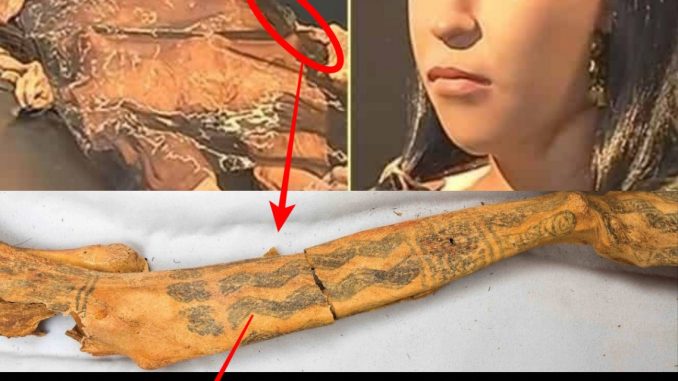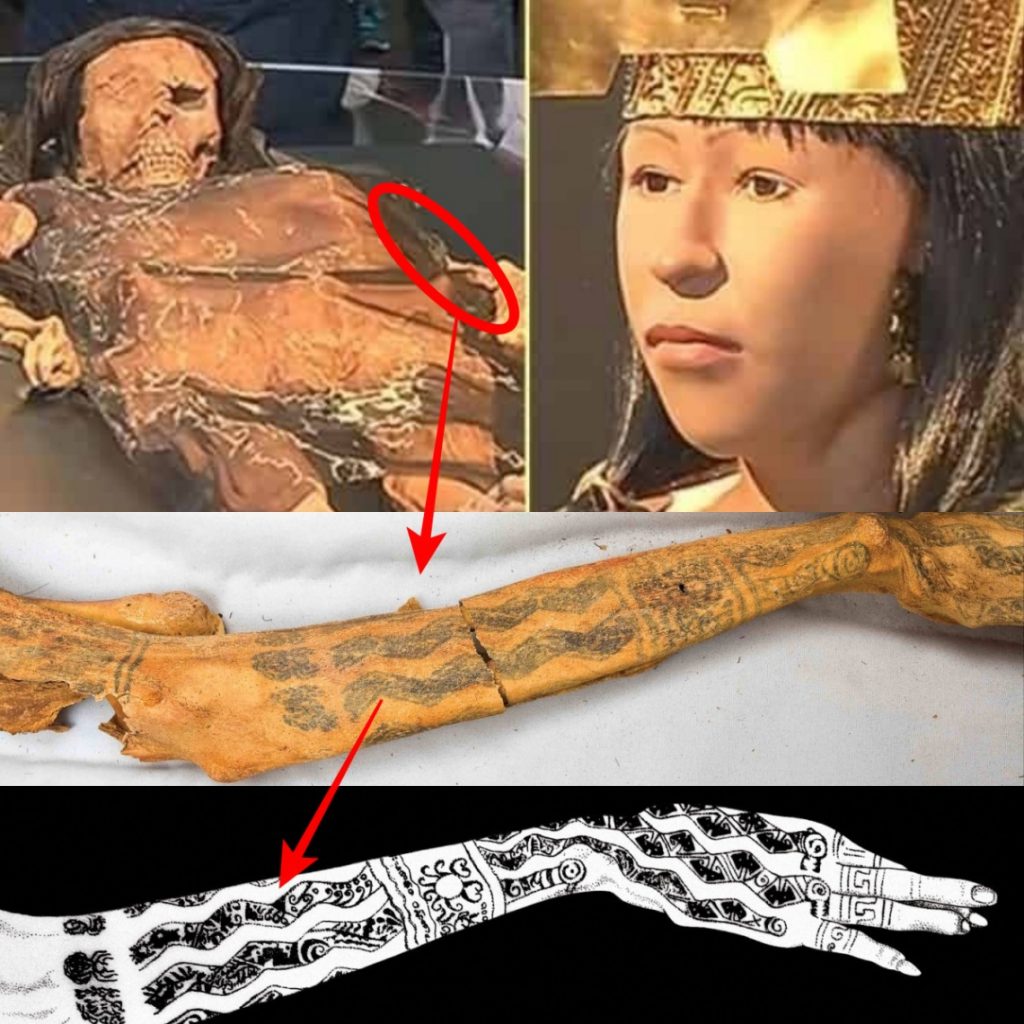
In the arid deserts of northern Peru, amidst the remnants of ancient civilizations, archaeologists unearthed a remarkable discovery that shed light on the rich tapestry of pre-Columbian cultures—the mummified remains of a noblewoman adorned with intricate tattoos. Known as the Lady of Cao, this extraordinary find offers a fascinating glimpse into the lives and customs of the Moche civilization, which flourished in the region over a thousand years ago.
The Lady of Cao was discovered in 2005 at the archaeological site of Huaca El Brujo, near the city of Trujillo, by a team of Peruvian archaeologists led by Dr. Régulo Franco Jordan. The mummy, dating back to approximately 450 AD, belonged to a woman of high status who was buried with an array of ceremonial artifacts, including jewelry, ceramics, and textiles.

What sets the Lady of Cao apart from other mummies of the Moche civilization is her remarkable state of preservation and the intricate tattoos that adorn her body. Covering her arms and legs are a series of elaborate designs, depicting animals, mythological creatures, and symbols of power and prestige. These tattoos, made using soot and plant-based pigments, are among the earliest examples of body art found in the Americas.
The discovery of the Lady of Cao has sparked widespread interest and admiration for her remarkable life and legacy. Through forensic analysis and archaeological research, scholars have pieced together the story of this extraordinary woman, revealing her importance as a political and religious figure in Moche society.
It is believed that the Lady of Cao held a position of authority within the Moche civilization, perhaps serving as a priestess or ruler in her own right. Her elaborate tattoos, along with the ceremonial objects found in her tomb, suggest that she played a central role in religious rituals and ceremonies, invoking the power of the gods to ensure the prosperity and well-being of her people.
The discovery of the Lady of Cao challenges our preconceptions about gender roles in ancient societies and highlights the significant contributions of women to political and religious life. In a culture dominated by male rulers and warriors, the Lady of Cao stands as a testament to the strength, intelligence, and leadership of women in the ancient world.
Today, the mummy of the Lady of Cao is housed in the Museum of the Royal Tombs of Sipán in Lambayeque, Peru, where visitors can marvel at her exquisite tattoos and learn about her fascinating life and times. Through her story, we gain a deeper understanding of the complexities of ancient Peruvian civilization and the enduring legacy of its remarkable inhabitants.
Leave a Reply